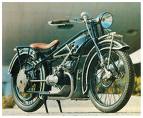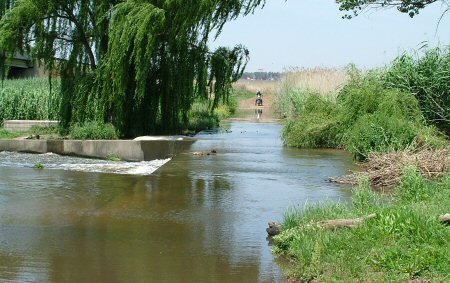It is no secret that in South Africa we ride BMW motorcycles off road* even when they were never intended for that purpose. Most of these riders are GS owners.
* I mean radical off road stuff – like jeep tracks, mud holes, deserts and dry river beds.
Occassionally standing around the braai fire (barbeque) the average modern GS owner wonders about the other R series BMW boxer engine products. Here is a quick overview so the other guys dont laugh at you . . . ( launch year followed by model).
The R Series boxer story broadly breaks up into two eras i.e. 2 valve and 4 valve.
Two valve era – R Series
1923 – R32 – This motorcycle, and all the R models that followed, are identical in concept – all the way to the 2009 R1200 – a period of 85 years. Two cylinder, opposing, air cooled, crankshaft in line with the direction the bike travels, dry clutch plate like a car and a final drive shaft – together fondly called the boxer engine.

BMW R32 Boxer engine
1925 – R37
1928 – R62, R63
1939 – 1945 – R75 for the German army often with a sidecar
1951 – R51/3
1952 – R68
1955 – R50 (500cc), R60 (600cc) R69 (600cc), R69S (600cc)
Slash 2 bikes are variations of the above
R50/2, R60/2, R67/2
This was the line up of BMW motorcycles during the 1950’s and 1960’s
The 1970’s saw the 5, 6 and 7 series – 500cc, 600cc, 800cc and 1000cc engines
1969 – R50/5, R60/5, R75/5
1974 – R60/6, R75/6, R90/6
1977 – R60/7, R75/7, R80/7, R100/7
Motorcycle description codes
From 1977 the slashes now dissappear and are replaced by a motorcycle description code. These codes apply to the K series as well.
CS – Classic Sport
G/S – Off road street
GS – Off road Sport (Enduro)
GT – Grand Tourer
R – Roadster, usually naked
RS – Travel Sport
RT – Travel Tourer
S – Sport
ST – Sport Tourer
T – Tourer
L – Luxery
C – Cruiser
Adv – Adventurer
1976 – R100RS
1979 – R65, R65LS, R100, R100 RT, R100S
1981 – R80G/S, R100CS
1982 – R65LS, R80RT, R80ST
1985 – R80
1988 – R65GS, R80GS
1989 – R100GS
Four valve era – R Series
1993 – R1100RS
1994 – R1100GS
1995 – R850R, R1100R
1996 – R1100RT
1999 – R850GS, R1100S, R1100SS
2000 – R1150GS
2001 – R1150R, R1150RT
2002 – R1150GS Adv, R1150RS
2003 – R1150R Rockster, R1200C, R1200CL
2004 – R1200GS
2005 – R1200ST
2006 – HP2, R1200 GS Adv, R1200RT, R1200S
2007 – R1200R
2008 – No new R series models launched
2009 – No new R series models launched

BMW R1200GS Boxer engine
ADDITIONAL NOTES:
K Series launched during the 1980’s featured a completely different engine and is 100% a road motorcycle i.e. the 3/4 cylinder water cooled engine.
F Series launched in 1994 featured a single 650cc cylinder chain driven Rotax engine with a wet clutch. Modern versions of this motorcycle include the 800cc and two cylinders.
G Series launched in 2006 features motorcycles with smaller engines i.e. 450 and 650cc. These motorcycles are super motards or street legal enduro off road models.
S Series is the new Sport series intended to compete with the best that Japan has to offer.
HP2 is not part of the R Series but briefly included above for convenience as it makes use of the same engine.
For more information check out Bikez.com







